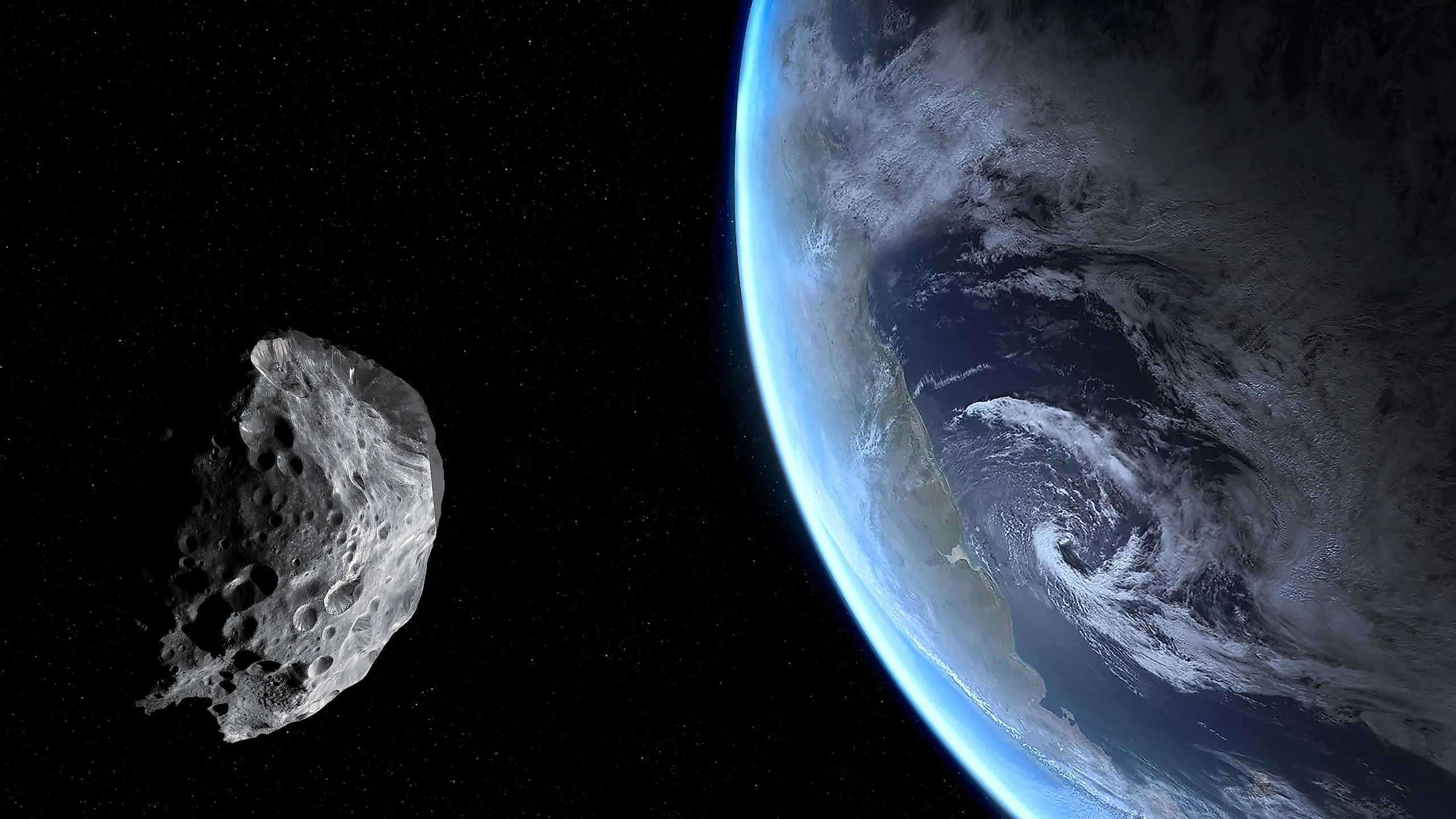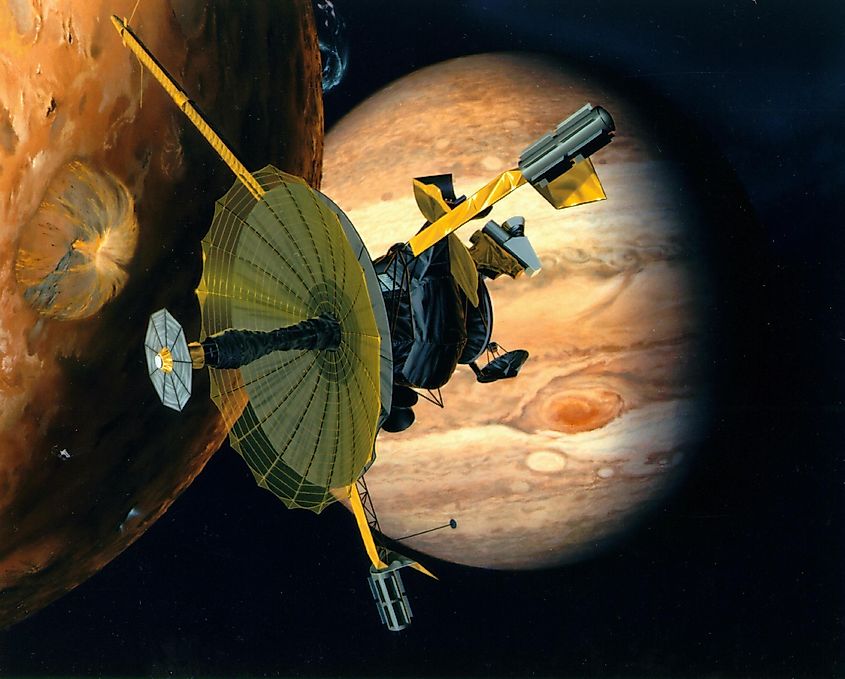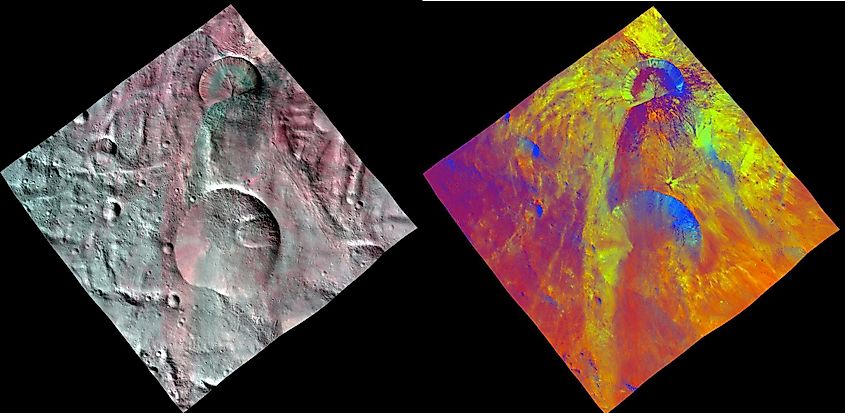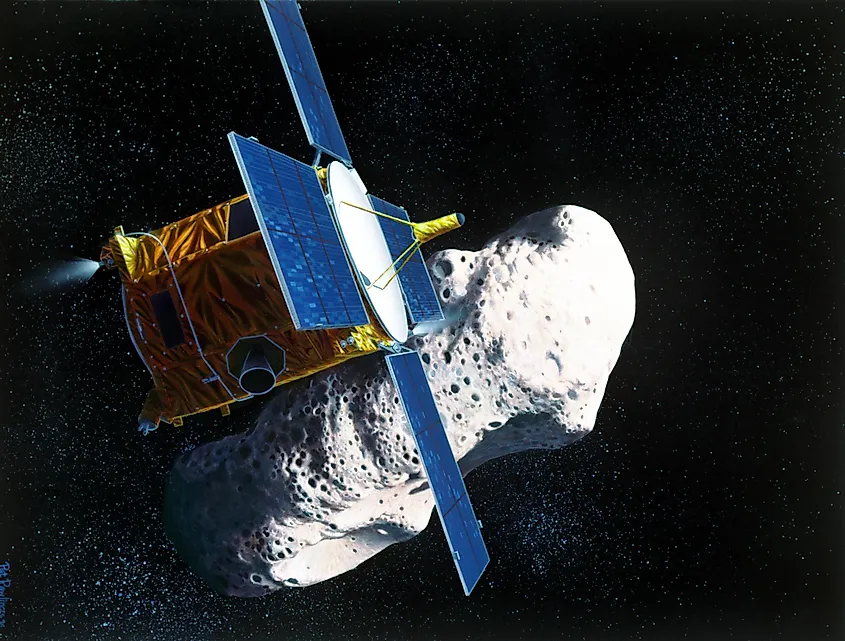
Asteroids
After the formation of the sun, there was a tremendous amount of debris in its orbit. Most of this debris coalesced to form the planets and their moons. Some of this debris never became part of the planets, and instead, it fell into orbit between Mars and Jupiter, forming what's called the Asteroid Belt. The majority of asteroids in the solar system are in the Asteroid Belt. Asteroids will be one of three types: C-type, M-type, and S-type. The type of asteroid is dependent upon its composition. C-type bodies contain carbon, M-type ones are metallic, and S-type ones contain silicon. Asteroids can vary significantly in size, ranging from only a few miles across to hundreds of miles across.
Observational History

Most asteroids are minor and far, so observing them without equipment is impossible. Only one asteroid, called 4 Vesta, is sometimes visible to the naked eye. If an asteroid happens to pass by the Earth, it may also be visible without a telescope, although these events are rare. Studying asteroids is a reasonably recent development, given the difficulty in observing asteroids. The first asteroid was discovered in 1801 by astronomer Giuseppe Piazzi. On New Year's Day, 1801, Piazzi observed an object located between the orbits of Mars and Jupiter. At first, Piazzi believed he had discovered a comet but later claimed that this new object may be a planet. He named it Ceres, and although it was believed to be a planet, it would later turn out to be the first object to be found in the Asteroid Belt. By the 1850s, however, observations of Ceres revealed it was too small to be a planet, and it was reclassified as an asteroid. In 2006, astronomers reclassified Ceres once again, this time defining it as a dwarf planet along with Pluto.
By the end of the 1800s, astronomers uncovered more than 300 individual asteroids. Over the years, hundreds more were discovered. By the early 1920s, over 1,000 asteroids had been found. As of 2020, astronomers have confirmed the existence of over one million asteroids, the vast majority of which exist in the Asteroid Belt. Astronomers will take a comprehensive image of the night sky to discover asteroids. Generally, multiple photos will be taken at different times. Astronomers will then analyze the photos and look for any moving objects relative to background stars.
Since asteroids are small and dim, studying them with Earth-based telescopes is complex, so most of what is known about asteroids comes from missions that have observed them up-close. The first up-close images of asteroids came from the Galileo spacecraft during its mission to Jupiter. Galileo flew through the Asteroid Belt and took pictures of two asteroids: 951 Gaspra and 243 Ida. The first spacecraft dedicated to asteroid research was NASA's NEAR Shoemaker. In 1997, the spacecraft entered into orbit around the asteroid 433 Eros. In 2001, the spacecraft successfully landed on the asteroid's surface. NEAR Shoemaker was the first spacecraft to orbit and land on the surface of an asteroid. Other asteroid dedicated missions include Dawn (2007), Hayabusa (2014), and OSIRIS-REx (2016).
Impacts On Planets

Asteroid impacts are a rare occurrence in the solar system, yet they occur occasionally. All of the inner rocky planets have evidence of impact craters, as do most of the moons in the solar system. Most of the impact craters in the solar system date to over four billion years ago, a period known as the Late Heavy Bombardment. After the sun and planets formed, every planet was bombarded by countless asteroids and comets. Asteroids that survived this period fell into orbit in what is now the Asteroid Belt.
Asteroids pose an exceptional threat to the Earth as they can cause mass extinction events. Scientists believe that an asteroid struck the Earth about 65-million years ago, resulting in the extinction of the dinosaurs. On average, the Earth is hit by a large asteroid every 200-million years or so, and so thankfully, the Earth is probably safe for a very long time from an extinction-level event.
Characteristics Of Asteroids

As stated before, asteroids are defined by their composition. C-type asteroids, also called carbonaceous asteroids, are the most abundant of all asteroid types. C-type asteroids comprise roughly 75% of all known asteroids. C-types contain an abundance of carbon, making their surfaces darker than other asteroid types. Because of this, C-types are somewhat challenging to observe from a distance. They are primarily found on the outer edges of the Asteroid Belt, making their study even more difficult.
M-type asteroids, also called M-class or metallic asteroids, contain a high abundance of metals, notably iron and nickel. Interestingly, evidence for metal in this type of asteroid comes only from indirect methods. Analysis of their spectra is similar to the composition of metal-rich meteors. Furthermore, M-types reflect more sunlight than other asteroid types, hinting at the existence of metals on the surface. M-type asteroids are the rarest type of asteroid, making up only 8% of all known asteroids.
The third asteroid type is S-type, also called silicate asteroids. S-types are significantly less common than C-types yet more than twice as typical as M-types. S-types make up 17% of all known asteroids. S-types are pretty common in the inner to mid regions of the Asteroid Belt, yet they become pretty rare in the outer areas. They are primarily composed of silicate rocks with small amounts of metal.
Asteroid Terms And Definitions
| Term | Definition/Explanation |
|---|---|
|
C-type |
A type of asteroid that contains high amounts of carbon. They are the most common type of asteroid |
|
M-type |
A type of asteroid that contains an abundance of metals such as iron and nickel. They are the rarest type of asteroid |
|
S-type |
A type of asteroid containing an abundance of silicate rocks |
|
Asteroid Belt |
A region in the solar system located between the orbits of Mars and Jupiter, home to the vast majority of asteroids |











